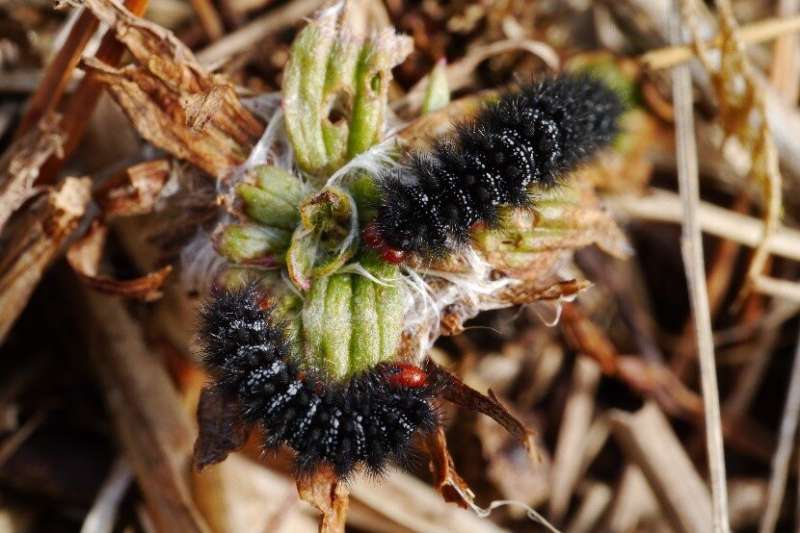Small things can have a major effect on the prevention of biodiversity loss

The population growth of an endangered butterfly species is greatest in habitats with microclimatic variability, according to a study carried out collaboratively by the Faculty of Biological and Environmental Sciences and the Helsinki Institute of Life Science of the University of Helsinki, as well as the Finnish Environment Institute.
Insects are often very restricted in their capacity for movement. In many species, specific stages of life are spent entirely immobile, making them dependent on the temperature and moisture conditions of their immediate surroundings. In the Åland Islands on the southwest coast of Finland, Glanville fritillary butterflies (Melitaea cinxia) spend roughly 10 months of the year in the larval stage. In the middle of summer, the newly hatched larvae eat the host plant on which their eggs were deposited. Prior research has shown that plants can wither entirely in dry summers, with prolonged dry periods sealing the fate of butterfly larvae. In such cases, only those larvae survive whose eggs have been laid on a plant growing in an exceptionally moist spot.
"We investigated how varying microclimates affect larval growth and survival in the spring after the overwintering. We found that warm, sunny days in March woke up the larvae and made them look for food. However, very little food was to be found, since the few warm days in early spring were followed by a cool April, with the growing season of the larval host plants only beginning in earnest in May," says doctoral researcher Susu Rytteri from the University of Helsinki's Research Centre for Ecological Change. She defended her thesis at the end March 2021.
The researchers observed that in sunny and warm microclimates, larvae grew faster but also perished in large numbers because of lack of food. In cooler and shadier microclimates, larval growth was slow, a boost to the sufficiency of food: Food plants had the time to grow in sync with the nutritional requirements of the larvae. Comprehensive survey data from the Åland Islands also demonstrated that Glanville fritillary populations grew the most in meadows where their larvae inhabited varying microclimates.
"The growth of butterfly populations increased when larval groups were located in particularly warm spots on sunny southward slopes. At the same time, the larvae also benefited from cooler and shaded microclimates. Due to the unpredictability and variability of weather conditions, the optimal egg-laying strategy for insects would appear to be laying eggs in varying microclimates which have the capacity to protect their immobile offspring from unfavorable conditions. The problem is that habitats have declined in number and become increasingly uniform. Consequently, varying microclimates are not necessarily on offer," Rytteri says.
More microclimatic variability in yards and gardens
Promoting microclimatic variability in your backyard helps insects and other animals. The sunniest spot in the yard can be turned into an even warmer place for sunbathing by, for example, constructing a section of stone wall that stores heat and offers protective crevices for small creatures. An oasis in the shade can be built in the coolest location in the yard by planting lush plants that thrive away from the sun and by adding a water element that is not only pleasing to the human eye but also serves as a watering place for animals during dry spells.
"Butterflies benefit from diverse plants, and in butterfly gardens, the goal should be floral splendor stretching from early spring long into the autumn. Many garden plants are good melliferous plants, that is, plants rich in pollen and nectar, but wild meadow plants shouldn't be overlooked either. Trees, bushes, rocks and knolls form variable microclimates and offer protection from unfavorable weather conditions," Rytteri points out.
More information: Susu Rytteri et al, Microclimatic variability buffers butterfly populations against increased mortality caused by phenological asynchrony between larvae and their host plants, Oikos (2021). DOI: 10.1111/oik.07653
Journal information: Oikos
Provided by University of Helsinki



















